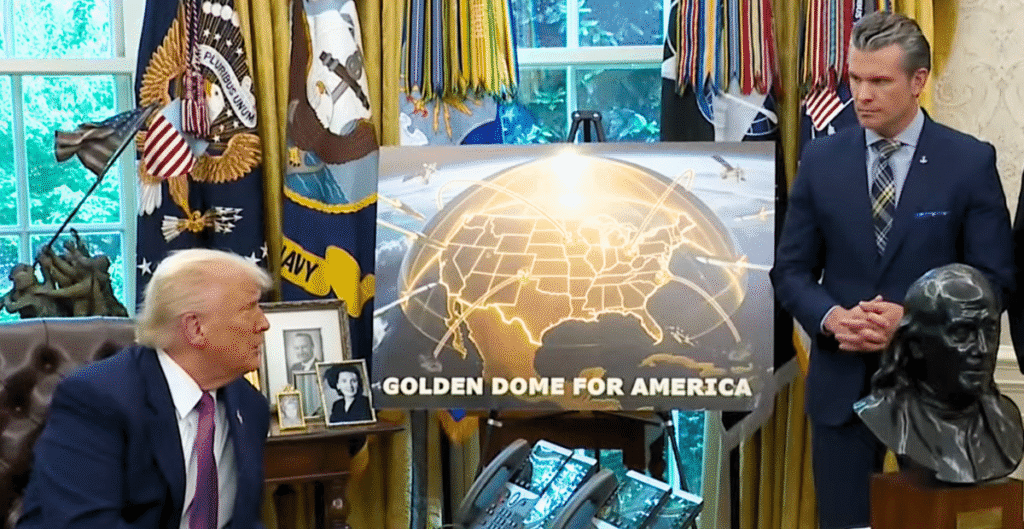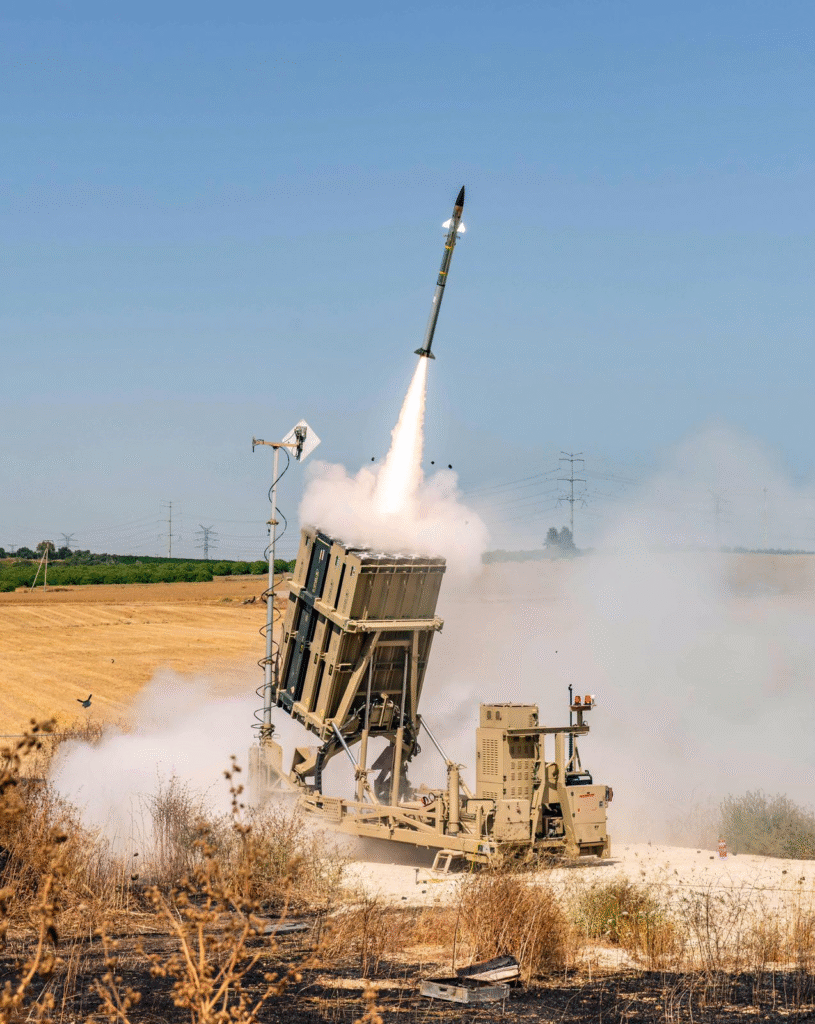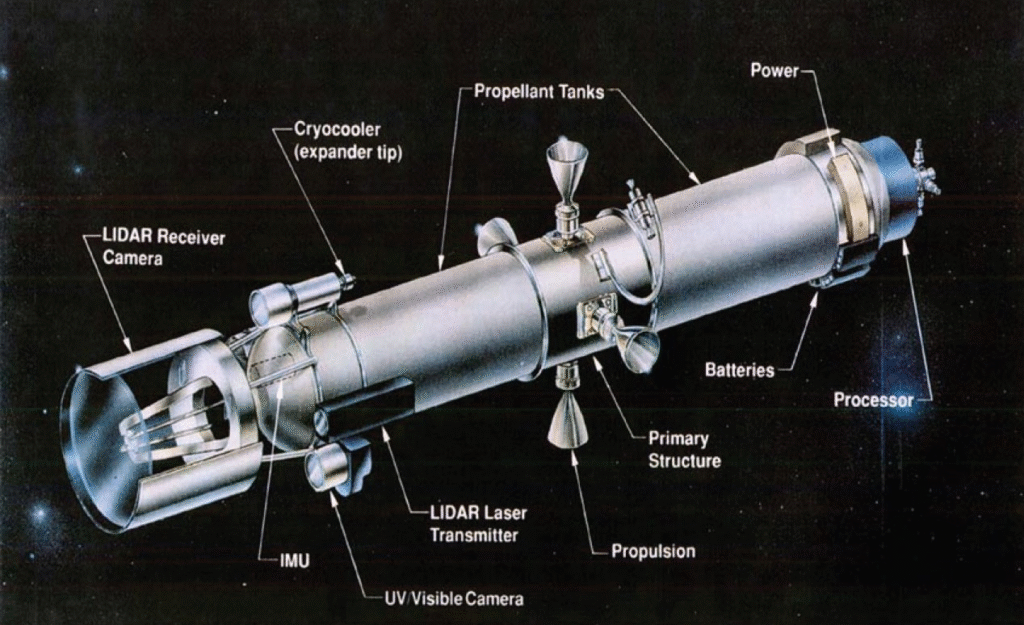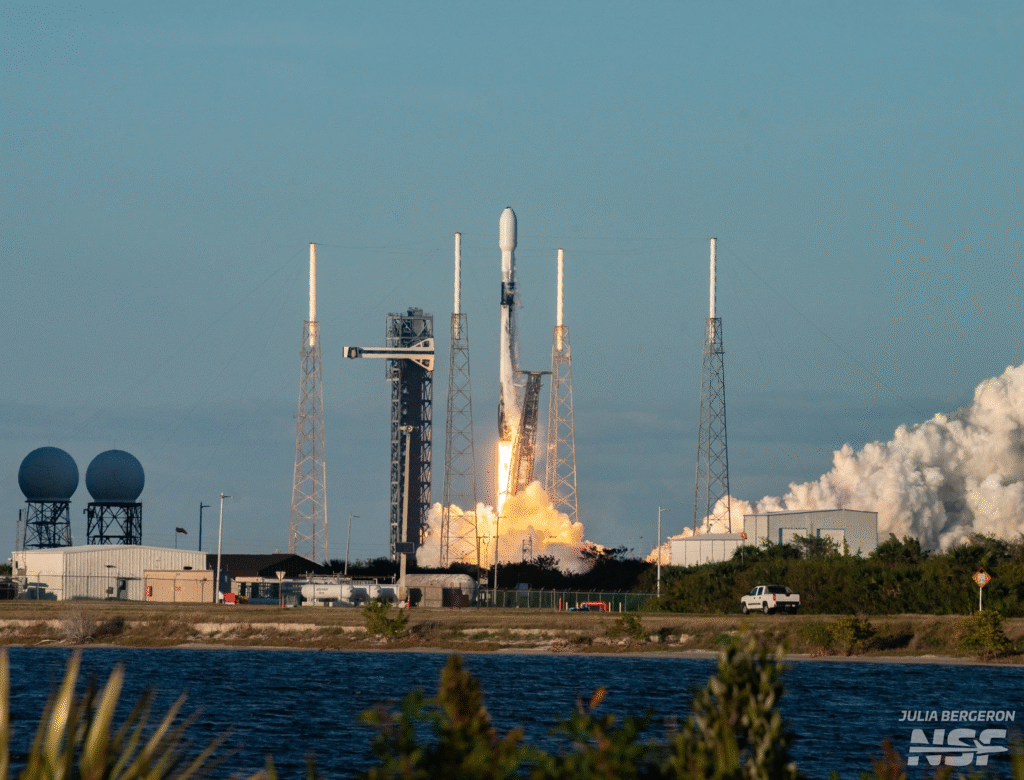The Golden Dome, a proposed multi-layered space-based concept, is comparable to the Israeli Iron Dome air defence system. It aims to protect the United States from a variety of foreign threats. It would require the US to maintain weapons in space for the first time and is criticised for its potentially high cost and uncertain effectiveness, making it highly controversial.
1.0 What is it?
Announced by US President Donald Trump, the Golden Dome is a concept for a multi-layered system of space-based interceptors and sensors. These would detect and destroy missiles before launch or during flight, including ballistic, hypersonic, and cruise varieties. It would defend the US without the involvement of ground-based interceptors, which could be saved for use against other threats during any conflict.

1.1 Comparisons
Golden Dome is often compared to several planned and extant systems, including:
1.1.1 Iron Dome
The Iron Dome is an Israeli air defence system developed by Rafael Advanced Defence Systems and Israel Aerospace Industries. It is designed to intercept and destroy short-ranged rockets and artillery shells. It was first deployed on 27 March 2011. With a reported effective rate of 90% interception, it has defended Israel against weaponry launched by its adversaries.

During Donald Trump’s address to a joint session of Congress in March 2025, when asking for funding in regards to a missile defence system, he stated, “Israel has it, other places have it, and the United States should have it, too.”
1.1.2 Brilliant Pebbles
Brilliant Pebbles was a space-based ballistic missile system proposed by the Lawrence Livermore National Laboratory (LLNL) in 1987. The concept included several thousand small low-earth orbit satellites (“Pebbles”) equipped with missiles, similar to heat-seeking missiles. Hundreds would perpetually sit over the Soviet Union, using infrared sensors to detect, intercept, and destroy any launched ICBMs.

Cancelled in 1993 due to funding conflicts in Congress, elements of the project have reemerged in the Golden Dome proposal.
2.0 History of US Space-Based Weaponry and Defence Systems
The history of US space-based weapons and defence systems dates back to the Cold War. Several unimplemented concepts and plans have existed throughout US Defence history.
2.1 Strategic Defence Initiative (SDI)
On 23 March 1983, then US President Ronald Reagan announced plans for a research and development program called the Strategic Defence Initiative (SDI), colloquially referred to as “Star Wars.”

The concept included a network of space-based missile defence systems aimed at neutralising launched foreign nuclear weapons and also acting as a “hedge against a Soviet ABM breakout.” By the 1990s, congressional concern that the program would violate the 1972 Anti-Ballistic Missile Treaty had reoriented both funding and focus to the Ballistic Missile Defence Organisation, which focused on ground and sea-based defence systems.
[source, source, source, source]
2.2 National Missile Defence Act (1999)
In 1999, Congress passed the National Missile Defence Act. According to its chief sponsor, Senator Thad Cochran, it would be “the necessary first step to protecting the United States from long-range ballistic missile attack.”
The act gave the US a policy goal of developing and deploying a national missile defence system to help defend US territory from a limited ballistic missile strike.
In 2002, President George W. Bush issued a national security directive that cemented the commitment to the development of this system, following his withdrawal of the US from the Anti-Ballistic Missile Treaty a year prior.
2.3 Ballistic Missile Review (2010)
In 2010, the Obama administration released the Ballistic Missile Defence Review, which shifted the focus from a homeland shield system to a more flexible regional and cooperative missile defence system.
One section of the review stated that the space-based technologies would not be used to directly counter ballistic missile threats.
This reorientation towards a ground-based, regional system constituted a fundamental shift in US attitudes towards missile defence.
[source]
2.4 Missile Defence Review (2019)
In 2019, the first Trump administration released its Missile Defence Review (MDR), which laid out several new and continuing strategic plans and strategies.
One of these was continuing to rely upon nuclear weapons for deterrence while aggressively pursuing a variety of kinetic and non-kinetic means to counter ballistic missiles, cruise missiles and hypersonic glide vehicles (HGVs). Another strategy outlined and endorsed in the review was a “defence and defeat dominant” posture. This would enable the US to more effectively counter threats from rogue states such as North Korea.
Trump also endorsed the establishment of a Space Sensor Layer (SSL), which would detect missiles and other weapons fired at the United States. This could be seen as laying the groundwork for the more recent Golden Dome concept.
[source]
3.0 Components of the Golden Dome
The “Iron Dome for America” executive order released by the White House on 27 January 2025 notes that the system would contain eight components:
- Defence of the United States against ballistic, hypersonic, advanced cruise missiles, and also other next-generation aerial attacks from peer, near-peer, and rogue adversaries.
- Acceleration of the deployment of the Hypersonic and Ballistic Tracking Space Sensor layer.
- Development and deployment of proliferated space-based interceptors capable of boost-phase intercept.
- Deployment of underlayer and terminal-phase intercept capabilities is postured to defeat a countervalue attack.
- Development and deployment of a custody layer of the Proliferated Warfighter Space Architecture.
- Development and deployment of capabilities to defeat missile attacks before launch and in the boost phase.
- Development and deployment of a secure supply chain for all components with next-generation security and resilience features.
- Development and deployment of non-kinetic capabilities to augment the kinetic defeat of ballistic, hypersonic, advanced cruise missiles and other next-generation aerial attacks.
[source]
3.1 Hypersonic and Ballistic Tracking Space Sensor (HBTSS)
HBTSS is a layer of the Golden Dome’s satellite-based sensor system being developed by the Missile Defence Agency (MDA) that will track threats from launch until interception by other systems. It will be part of the ‘tracking’ layer of the Proliferated Warfighter Space Architecture.
[source]

3.2 Proliferated Warfighter Space Architecture (PWSA)
The PWSA, previously known as the National Defence Space Architecture, is intended to “unify and integrate next-generation capabilities across the DOD and industry” and consists of:
- Custody Layer – Support the targeting of mobile ground assets.
- Battle Management Layer – Provides space-based command and control.
- Navigation Layer – Provides “alternate positioning, navigation and timing for potential GPS-denied environments.”
- Deterrence Layer – Detects hostile actions in deep space.
- Support Layer – Facilitates satellite operations for the other layers of the PWSA.
[source]

3.3 Layers
U.S. Northern Command Commander General Gregory Guillot, in April 2025, testified before Congress that the Golden Dome concept has several layers, which expand upon and further develop existing systems. These include a domain awareness layer that tracks threats, an ICBM defeat layer that intercepts ICBMs, and an “air layer” that intercepts and destroys cruise missiles and other air threats.
[source]

3.4 Companies Involved in Golden Dome
Several private companies have both confirmed or are bidding to be involved in the construction of the Golden Dome:
3.4.1 SpaceX, Palantir, and Anduril
SpaceX is the leading company that has bid to take part in the building of the Golden Dome. It pitched to both the Pentagon and the US Defence Department a ‘subscription model.’ SpaceX reportedly will not be involved in the weaponisation of satellites. This bid, although led by SpaceX, is joined by partner companies Palantir and Anduril.
[source]

Subscription Model
The ‘subscription’ model proposed by CEO Elon Musk includes the US government paying for access to the Golden Dome instead of owning the system outright.
This model would allow the Pentagon to circumvent both procurement models and laws. These laws would complicate a more traditional procurement route. But it would remove some control of the system by Washington and could put the U.S. military in a position of losing access if it refuses to pay.
[source]
3.4.2 Lockheed Martin
Lockheed Martin is on track to participate in Golden Dome’s construction. On 5 August 2025, it announced its intention to test a program-related space-based interceptor by 2028.
Amanda Pound, the Director of Advanced Programs Development at Lockheed Martin, announced that the company was exploring several concepts, including orbital lasers and satellites, which could convert into manoeuvrable kinetic projectiles.
[source]
3.4.3 NASA
NASA, though not directly involved in the construction of the Golden Dome, has achieved technological advancements in propulsion, AI technology, and cryogenic fluid management that could assist in the eventual building of the system.
[source]
3.4.4 The Heritage Foundation
Like NASA, the Heritage Foundation has also been involved in the background of the Golden Dome project. In Project 2025, the Foundation repeatedly advocated for the involvement of both SpaceX and its Starlink satellites, which they said proved that a space-based “overlayer” of satellites which could be used for defensive networks was now possible.
[source]
4.0 Effectiveness
The Trump administration has lauded the potential of the Golden Dome concept, but there remain some questions about its effectiveness. Challenges include:
- The size of the USA. Compared to the Israeli Iron Dome, the Golden Dome system must cover an area that is some 445 times larger (9,833,520 km2 vs 22,072 km2). [source, source, source]
- Range of threats. Unlike the Iron Dome, which is aimed at primarily taking out artillery and short-range rockets, the Golden Dome would face ICBMs, hypersonic missiles and glide vehicles, and potentially, Fractional Orbital Bombardment Systems (FOBS). [source]
- Timeframe – Although it has been proposed and funding has been set up, the Golden Dome project is estimated to be completed in 2035, nearly 6 years after the end of Donald Trump’s 2029 estimate. [source]
4.1 Cost
Cost is one main concern surrounding the Golden Dome proposal. President Trump stated that, by the end of his term in January 2029, the project would cost some $175 billion, but experts have warned that this is optimistic and cite a cost ranging from $831 billion to $3.6 trillion.
[source]
5.0 Controversy of the Involvement of SpaceX
Four months after the beginning of Donald Trump’s second presidency, in May 2025, forty-two members of the US Congress requested that the DoD Inspector General review the involvement of both Elon Musk and SpaceX in the Golden Dome.
Congressional members cited several concerns, including that a deviation from standard acquisition processes to a subscription model would give Musk “undue influence over national security.” Another concern cited was that the former head of US homeland missile defence, USAF General (ret.) Terrence J. O’Shaughnessy reported directly to Musk at SpaceX.

Also raising pointed interest is Space Development Agency (SDA) founder Michael D Griffin’s 2001 trip to Russia with Musk to study ICBMs. Griffin subsequently steered $2 billion in contracts with NASA towards SpaceX.
SpaceX has also secured missile-tracking satellite contracts through the SDA as a part of the ‘Starshield program.’ This prompted the members of Congress to warn about the potential infiltration and additionally, the subversion of contracts and funding towards Elon Musk and SpaceX, which provides undue amounts of influence over the whole project.
[source, source, source, source, source]
6.0 Conclusion
The Golden Dome, a proposed US missile defence system intended to defend the United States against a variety of advanced foreign threats, is highly controversial and would also be the first time that the US has maintained space weapons in orbit. Conversations over its effectiveness and cost have soured debates over its implementation.
Equally, the involvement of Donald Trump’s ‘ally,’ Elon Musk, has raised concerns over the undue influence that a non-government, non-military member would hold over what would be an essential part of the US defence network. Compared to the Israeli Iron Dome, the Golden Dome must overcome a variety of obstacles. This is if it is to be actually implemented, raising further concerns over its feasibility.